Ultimate guide to buying a combine 2025
Some major updates are included in this year’s combine buyer’s guide, not least New Holland’s all-new CR top-end machines.
Existing CR Evolution and CX combines have also gained some improvements and extra kit.
Case IH, meanwhile, has upgraded the digital tech on its Axial-Flow machines, and Deere has done likewise while also adding more power for its T-Series straw walker and S-Series rotary models.
Claas has an additional Trion variant while Agco’s Ideal, in Fendt and MF guises, gets a power boost.
Combine specs
Download the complete 2025 guide to combines.
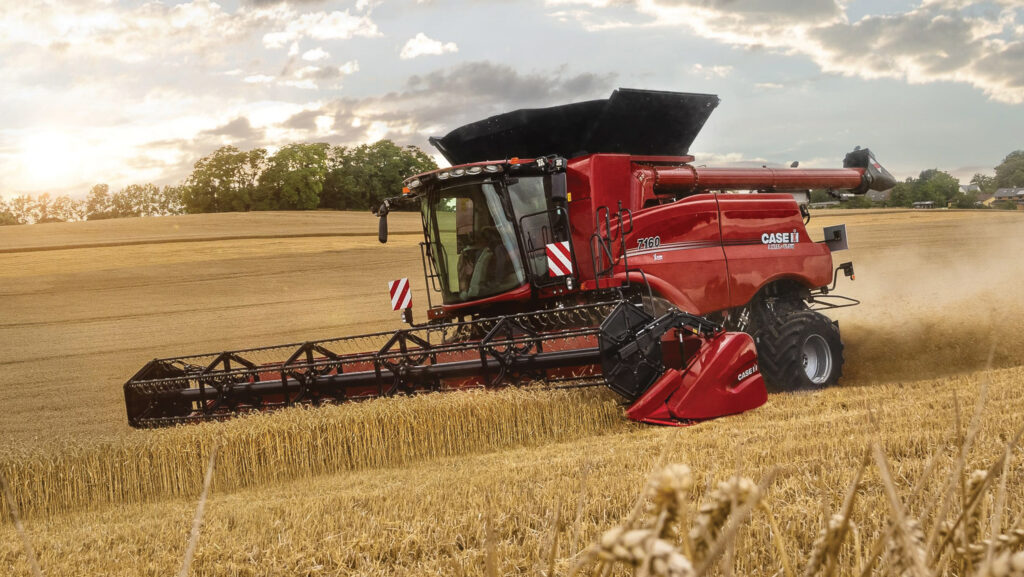
Case IH Axial-Flow 7160 single-rotor combine © Case IH
See also: New Holland CR11 combine takes fight to Deere and Claas
Case IH
While Case IH’s AF11 twin-rotor giant has been grabbing the headlines, alongside the single-rotor AF9 and AF10 being revealed for future harvests, growers needing a more modest harvester will benefit from a number of upgrades to the current 150-series and larger 250-series Axial-Flow combines.
In the re-titled 160-series, the 400hp Axial-Flow 6160 physically continues much as before, while the 7160 gains a bigger grain tank, enlarged by 1,900 litres to 12,500 litres.
From the operator’s point of view, the new option of AFS Harvest Command automation on these two models should be a welcome update, as it proactively monitors and optimises settings to achieve good grain quality with least losses, based on operator-set targets.
Like other such systems, this tech is reckoned to ease workload for less tiring stints behind the wheel, making more frequent fine-tuning adjustments on the go than a human operator would, and resulting in increased output overall.
It can be especially helpful to inexperienced operators while complementing the skills of a seasoned combine driver, taking care of ground speed, rotor speed, rotor cage vane angle, fan speed and sieve opening.
Photo-imaging and analysis of grain quality and non-grain material in the sample can be added to the package.
Four harvesting strategies emphasise performance, grain quality, maximum throughput and fixed throughput to cater for different priorities, crop conditions and the prevailing weather situation.
AFS Harvest Command is already an option on the 250-series combines, which transition to the 260-series with twin 12in AFS Pro 1200 touchscreen displays for easier access to various electronic functions.
For example, one screen mounted high on the front right-hand cab pillar can show satellite guidance while its console-mounted partner provides vehicle info and harvester settings in side-by-side windows.
The new FieldOps platform will replace the AFS Connect telematics interface to provide a simplified but also more comprehensive resource for individual machine, fleet and farm enterprise.
Case IH is also switching to a non-subscription, lifetime installation model for its various on-board and remote digital technologies, including AccuGuide steering and AccuSync in-field sharing of data between harvesters.
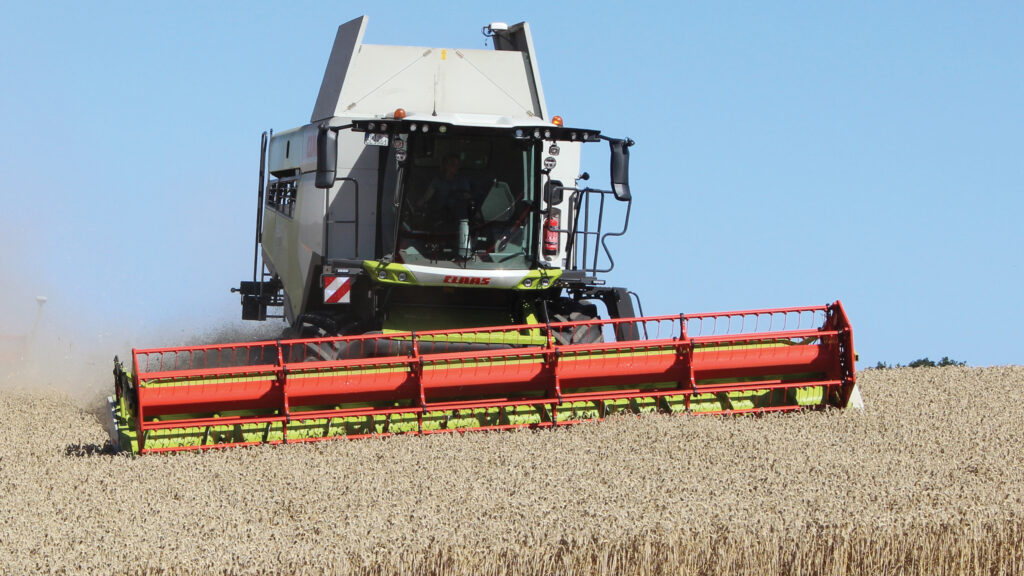
Claas Trion 540 Montana © Peter Hill
Claas
Claas Connect, a new cloud-based digital environment for machine and farm enterprise data recording, guidance management and so on is being rolled out across higher-end Claas products, including the Trion and Lexion combine ranges.
A five-year Connect licence has been standard on these machines since October last year, providing a gateway to Telematics, Remote Service and new Cemis Online File Transfer, the latter enabling GPS Pilot waylines to be set up and transferred wirelessly to the Cemis 1200 universal display in the cab.
Adding new combines to a farm’s Connect account will involve little more than scanning a QR code on the machine linked to its individual serial number; and that will give online access to specification details, user manuals, instructional videos, and lubricant and parts information relevant to that machine.
Meanwhile, the Trion straw walker line-up has been expanded a tad with the introduction of the 540 Montana; the level-land version can be equipped with the 3D dynamic top sieve for up to 20% slope compensation while the Montana whole-combine levelling package adds chassis side-to-side levelling up to 18%, and fore-aft up to 6%.
The newcomer shares its spec with the existing 530 Montana but has a 48hp power advantage at 354hp versus 306hp.
Both models are recommended to run with a 6.8m Auto Contour Vario header, which features 700mm of powered fore-aft adjustment of the knife position, with 5m and 6.2m versions suggested as alternatives.
Deutz-Fahr
No changes to the Deutz-Fahr line-up this year, except that all models are listed with Deutz 250hp to 381hp engines.
However, the change is cosmetic only, because Deutz has acquired the rights previously held by engine-maker MTU to adapt and distribute Daimler’s Mercedes-Benz OM truck engines for off-highway applications.
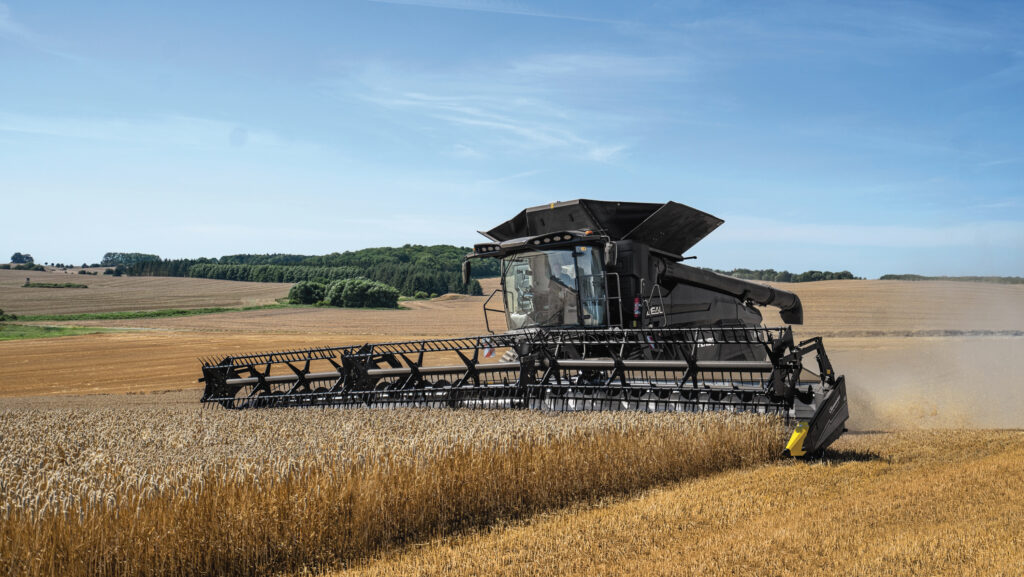
Fendt Ideal with Geringhoff TruFlex Razor © Fendt
Fendt
The only change to Fendt’s straw walker combines listing is that the tracked version of the 360hp 6335C six-walker harvester has been dropped, leaving the entire line-up running on tyres.
There are updates for the Ideal rotary threshing and separation combines, however, with most models benefiting from tuned-up engines delivering increased maximum power to help maintain performance under heavy load, especially when off-loading the 12,500- or 17,100-litre grain tanks.
The MAN diesel motors give up to 2% more power, the Ideal 7 now peaking at 483hp (up 7hp), the Ideal 8 at 549hp (up 11hp) and the Ideal 9 at 660hp (up 13hp), with increases also in engine torque. The flagship Ideal 10T with TrakRide running gear continues with 790hp.
In addition to the novel left-hand joystick steering option, Trimble AutoGuide can now include TI Headland, a £2,913 hands-free automated guidance feature for turning at the end of each pass, including operator-set cutting table height and reel position transferable to other Ideal combines using a USB memory stick.
Cutting table options for the Ideal 9T TrakRide and Ideal 10T TrakRide now go to a 13.7m Geringhoff or MacDon for added output.
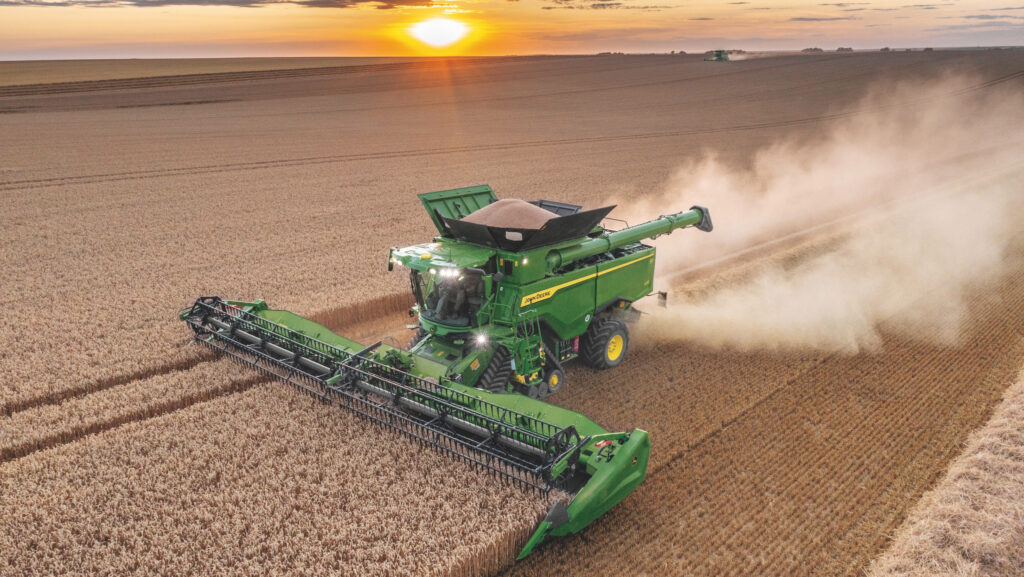
John Deere S7 900 single-rotor combine © John Deere
John Deere
A new cab, increased digital tech options and greater commonality of parts across the full line-up are among the key updates for John Deere straw walker and single-rotor combines.
Together with engine changes bringing more power for added performance and fuel economy, the updates have prompted a change of identity and model numbering.
Additional variants for the T5 (formerly T500) line-up mean there are now four models instead of three, with HillMaster versions available in each case and tracks in place of wheels being available for the two most powerful versions.
Peak power outputs available from Harvest IPM boost when unloading grain tanks on the move kick-off at 305hp (up 5hp), include the T5 500 with 348hp and T5 600 with 387hp (also up 5hp), and feature the new range-topping T5 700 with 421hp – up 39hp or 10% on the previous highest output.
Similarly, the T6 (previously T600) line-up has a new entry-level model in the T6 500 with 348hp peak output, while the T6 700 now goes to 466hp and the range-leading T6 800 gets a near 4% or 17hp gain at 466hp.
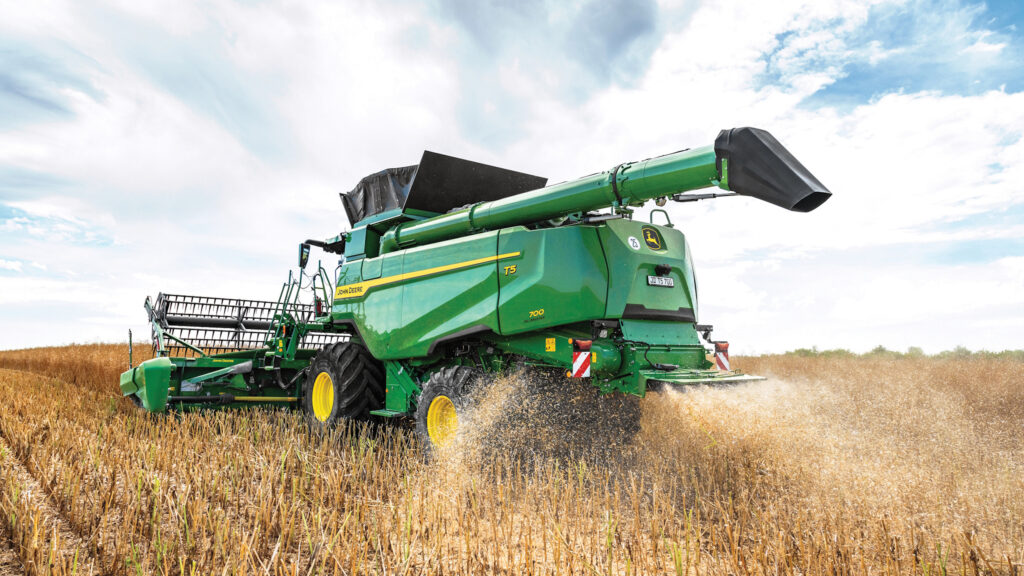
John Deere T5 700 HillMaster © John Deere
Combines from the T5 500 upwards feature Deere’s new JD9X engine, which features HarvestMotion engine speed management when coupled to the optional 40kph ProDrive auto-shifting two-range hydrostatic transmission.
This function reduces revs from 2,000 to 1,600rpm during road travel when topography allows, and down to 1,200rpm when waiting at road junctions or traffic lights.
Alternatively, there are 30kph three-range manual- and electric-shift transmissions available.
The single-rotor S-Series combines have also received some upgrades, not least in the engine compartment where the JD9X and JD14X engines bring power and torque upgrades and the HarvestMotion engine speed management.
Peak power, again available when unloading on the move, shifts upwards by 7-9hp in most cases, with the S7 700 gaining an 18hp or 4% increase from 449hp to 467hp.
Adopting the new cab first installed on the X9 twin-rotor combines for the T5, T6 and S7 ranges has not only brought new comfort and technology standards to those machines but also a much-increased commonality of parts across the range.
With the electrically latched doors shut tight, operators are presented with the CommandPro joystick with its operator-allocated button functions and the faster-responding 12.8in G5 Plus display.
This can be supplemented by a second unit for precision farming applications such as AutoTrac guidance, Machine Sync – which gives the combine operator control of a tractor and trailer running alongside – NIR grain analysis and so on.
Harvest Settings Automation becomes available for all, as does Ground Speed Automation, which responds to terrain maps and grain losses, and the new Predictive version that refers to biomass maps and crop height measurement to calculate crop volume and the need to slow down or the opportunity to speed up.
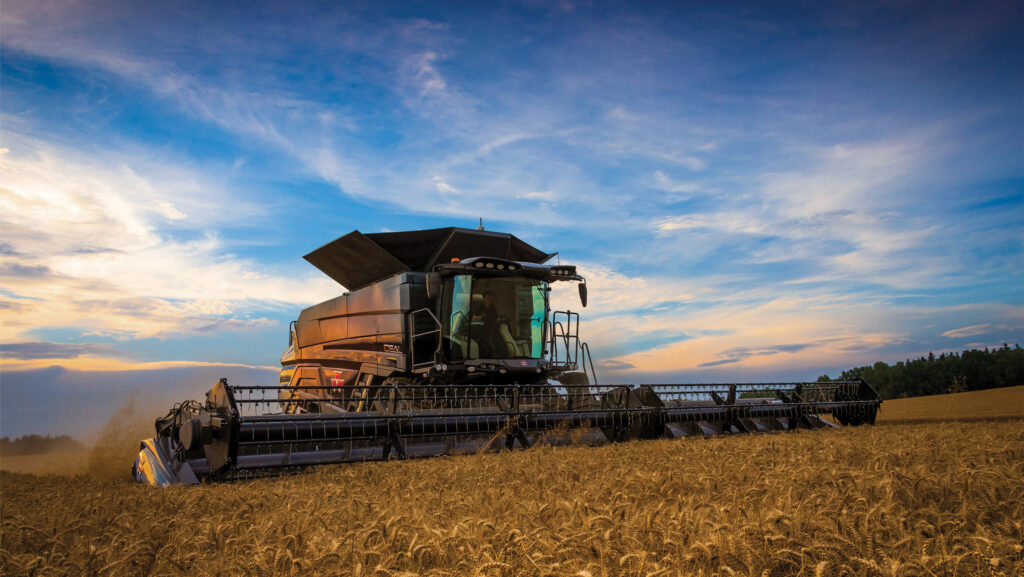
Massey Ferguson Ideal 9T twin rotor harvester © Massey Ferguson
Massey Ferguson
While MF’s Activa, Activa S and Beta straw walker combines continue unchanged, the Ideal rotary threshing and separation machines get the performance benefits that come from increased power.
The range-topping twin-rotor Ideal 9 gets a 13hp increase to 660hp with the power boost active for unloading on the move, and the similar Ideal 8 with the same MAN engine now has 549hp.
This is an 11hp gain to match the Ideal 9’s 2% increase, while the retuned Agco Power engine in the single-rotor Ideal 7 supplies a near 1.5% or 7hp gain.
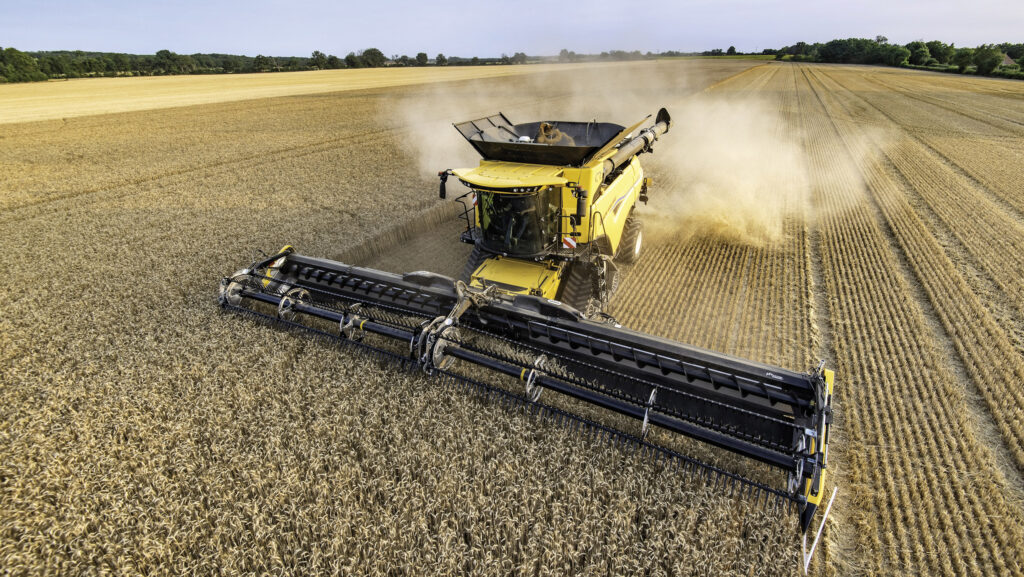
New Holland CR Revelations have tech upgrades © New Holland
New Holland
A fresh appearance with re-styled body panels distinguishes the latest CX straw walker and CR Revelation twin-rotor combines, whose operators get some in-cab comfort upgrades, as well as new tech and running gear for selected CR models.
Updates for the CX machines are limited to seating upgrades that include a heated and cooled leather-bound chair, a DAB+ radio giving access to more stations, and an optional set of three cameras feeding views to the in-cab display terminal.
In addition to these items, the CR Revelation combines gain a SmartTrax option for the CR7.90 and new high flotation tyre choices for all versions, comprising VF 620/70 R42 in dual formation, and Goodyear LSW 1250/35 R46 singles.
The adjustable rotor cage vanes that are used to vary crop flow speed through the combine are now available on CR7.80, CR7.90 and CR8.80 combines, having been established on their larger siblings to increase throughout by up to 20% when crop condition allows.
Oats are now included in IntelliSense, the automated settings optimisation system that already supports the operator in wheat, oilseed rape and soyabeans, and the NutriSense crop nutrient analysis package is now a factory-fitted option, enabling higher-value grain to be stored separately to maximise returns.
New Holland also plans to make PLM IntelliSense available on CR Revelation combines, featuring a more advanced touchscreen display with improved 3D mapping, grain condition imaging and analysis, remote display viewing, over-the-air updates, upgraded IntelliSteer guidance, and IntelliField wayline and coverage map sharing with other combines in the field.
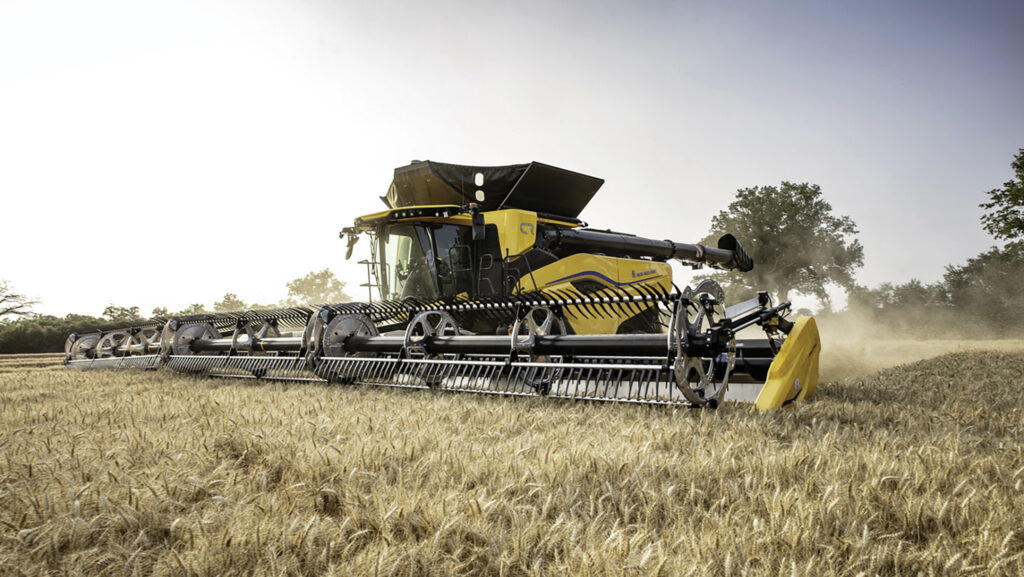
New Holland CR11 twin-rotor flagship © New Holland
For many of the largest growers and contractors, however, more significant is the introduction of the all-new CR10 and CR11 combines, which sport a pair of longer and larger-diameter threshing and separation rotors, bigger grain tanks and more power for up to 100t/hour harvesting potential.
FPT’s 12.9-litre Cursor 13 diesel serves up 635hp for the CR10 combine, and the 15.9-litre version provides 775hp for the CR11 – not quite enough to topple the 790hp Claas Lexion 8900 from the top of the engine power charts, but more than any other combine can muster.
Both engines are rated at a relatively low 1,900rpm and run at a fuel-saving 1,300rpm on the road.
The 610mm diameter, 3.6m long rotors with threshing and separation sections are complemented by the unique TwinClean dual cleaning system consisting of two sets of sieves in sequence, fed by a single grain pan, with a longer drop to the first upper sieve exposing the crop to a chaff-flushing airflow.
Variable lateral movement, induced by air pressure sensors, aims to keep the cleaning shoe evenly loaded across slopes of up to 28%, and each section has its own clean grain auger elevating to grain tanks of 16,000 litres on the CR10 and 20,000 litres on the CR11.
Up front, headers from 10.6m to 15m are available in rigid, flexible knife, movable knife and draper formats, with drive options including a CVT unit enabling variable header and feeder speed to suit different crops and harvesting conditions.
The feed roller that divides the crop flow into the two rotors is reversible for the first time, to help clear any blockages, while the rotors themselves are both larger and longer, have new threshing elements, and operate within stepped cages that allows the crop to expand in the separation section for easier grain extraction.
There are regular and fine-cut chopper options integrated into the rear hood, along with wide-spreading discs and oscillating deflectors to get straw and chaff distributed over as wide an area as possible, monitored as an option by radar to regulate spreading offset to one side or the other.
In the cab are two IntelliView 12 touchscreens, with the console-mounted version showing machine settings and performance, while the pillar-mounted twin is geared up for guidance and mapping.
Cameras to the rear, overlooking the grain tank and on the discharge auger, can be upgraded to provide a 360deg bird’s-eye view, and there are more remote-controlled functions than on previous New Holland combines – including rotor, chopper and auger running speeds, rotor and feed drum reversing, and engaging the straw chopper.
On the digital technology front, Core PLM IntelliSense comprises automated internal adjustments to optimise performance according to operator-set targets and parameters, while an Advanced version provides additional functions.
IntelliField software provides real-time in-field data and can share boundaries, guidance lines and coverage data with multiple machines operating in the same field.

